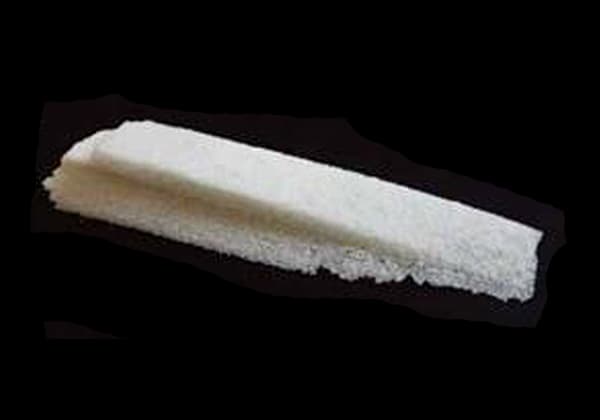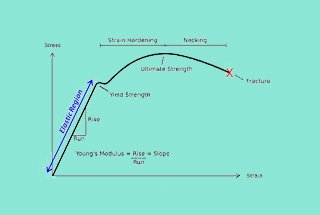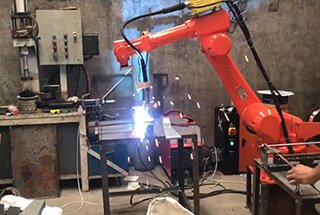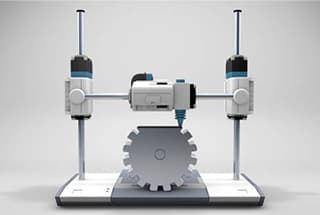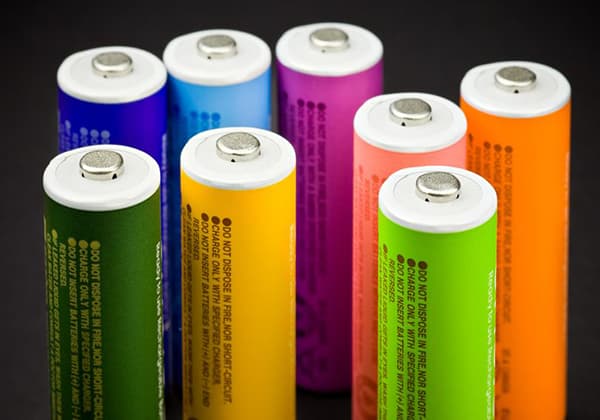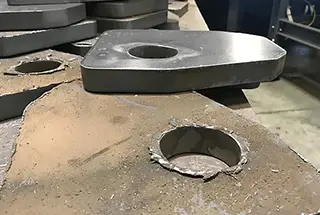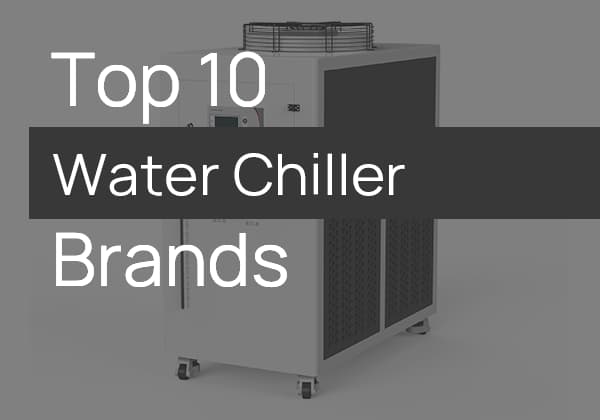
How can we ensure our laser cutting machines operate efficiently while maintaining a clean, safe environment? This article explores effective dust removal methods for laser cutting machines, highlighting both dry and wet treatment options. Readers will learn the importance of these techniques for prolonging machine life and safeguarding operators’ health.
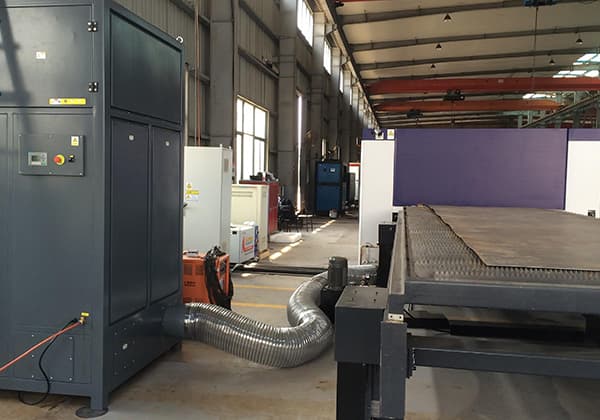
The fiber laser cutting machine will produce dust and smoke during the processing and cutting process.
On the one hand, it will have adverse effects on the health of the operating engineer, and on the other hand, it will pollute the precise parts of the machine.
The impact may be small in a short time, and will inevitably affect the service life and cutting performance of the machine over time.
Therefore, being equipped with green and environment-friendly dust removal equipment can effectively reduce the dust and smoke generated during the cutting process.
This paper mainly introduces the dust removal methods of large-format laser cutting machine – dry treatment and wet treatment.
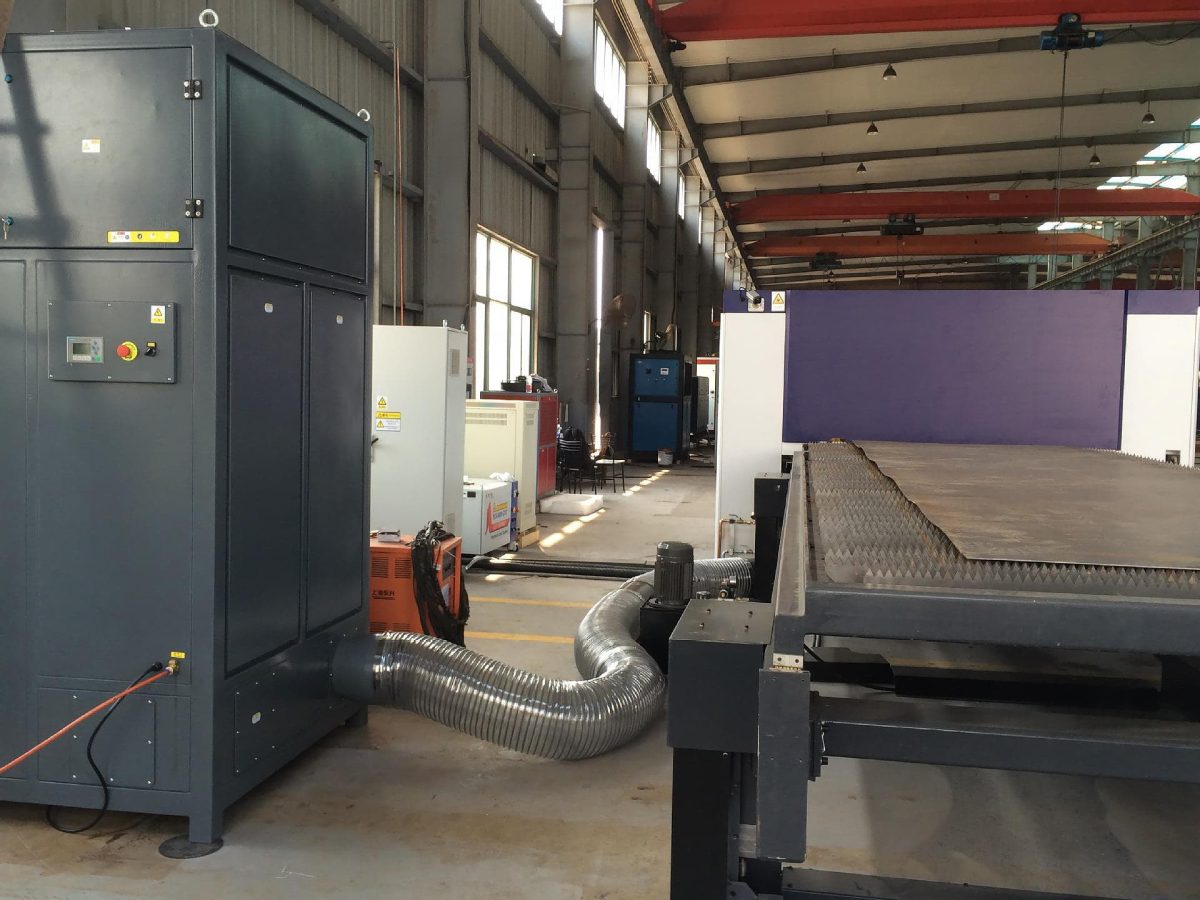
The dry treatment method is also called dry cutting, that is, the exhaust working platform is installed at the lower part of the laser cutting machine, and the dust-containing gas is sent to the smoke and dust filtration and purification device through the dust removal pipeline, and then it is discharged after the unified filtration treatment reaches the standard.
The smoke generated by cutting is basically formed below the workpiece cut, so the aspirated negative pressure cutting platform has become the most common smoke collection device at present.
In order to save equipment investment and improve the efficiency of air extraction, that is, to achieve a higher amount of smoke and dust collection with a small amount of air suction – only the area in the process of cutting is subject to dust extraction treatment (Fig. 1), so the air outlet and air suction are installed on both sides of the cutting head, and move forward and backward with the cross beam during cutting (side suction mobile air suction).
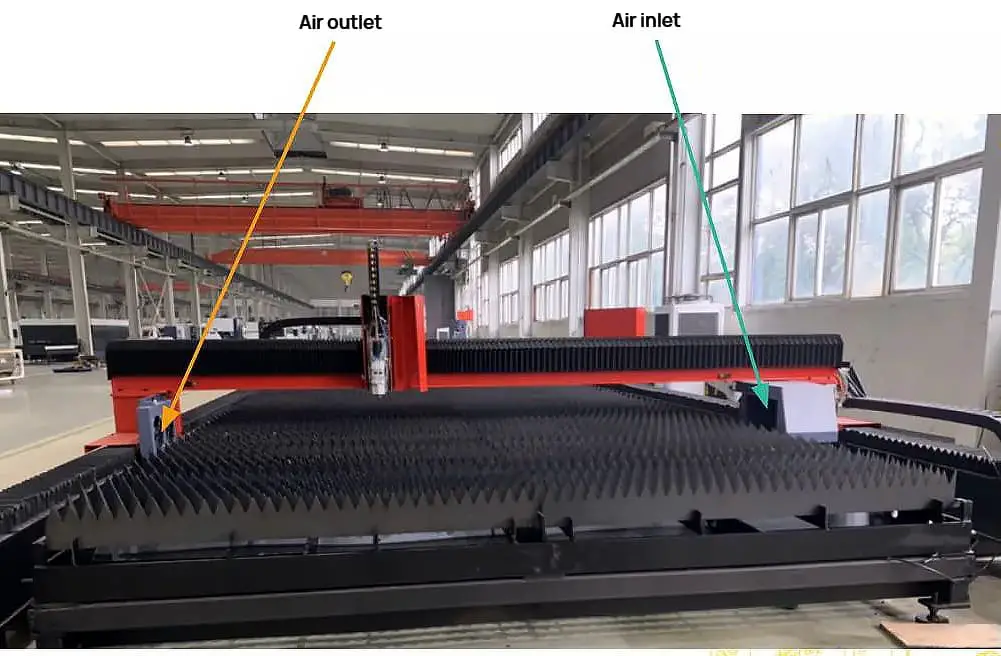
Fig. 1 Side-suction movable suction opening
Although this treatment method has relatively large investment in the early stage compared with the wet treatment method, it overcomes various disadvantages in the application of the wet treatment method, is environmentally friendly and has good comprehensive benefits in the later stage.
The dry treatment method is widely used in two types: the damper type and the blowing and suction type.
An air extraction platform is installed under the cutting machine.
It will be divided into (uniform) closed areas along the main guide rail of the cutting machine for independent air extraction by sections.
Each air extraction area is equipped with independent valves.
The open and closed air extraction doors are arranged in the air extraction duct at the edge of the platform.
When the cutting head moves to the upper part of the exhaust chamber, the cutting machine cooperates with the control air valve to automatically open the exhaust door of the area where the cutting is taking place, so that the exhaust area is connected with the dust removal system, so that the suction of the dust removal system can be effectively concentrated in the area around the cutting head, and the smoke and dust generated during the cutting process can be collected to the dust collector through the exhaust area, the suction duct, etc. for purification and then discharged.
It can be seen from the test that the air volume required for cutting and dedusting of the damper type has a large relationship with the width of the cutting platform, so according to the width of the platform, the cutting and dedusting system can be divided into single-side lower exhaust damper type cutting and dedusting system and double-side lower exhaust damper type cutting and dedusting system.
(1) Single-side lower exhaust damper type cutting dust removal system.
Figure 2 shows the structure of single-side downdraft door type cutting and dust removal system, which is applicable to the cutting platform with effective cutting width ≤ 4m.
The dust collector is connected to the movable air duct on one side of the machine body.
There is an independent movable exhaust door in the air duct. It opens when the cutting head moves to this area and closes when it leaves, ensuring the required air volume in the exhaust system.
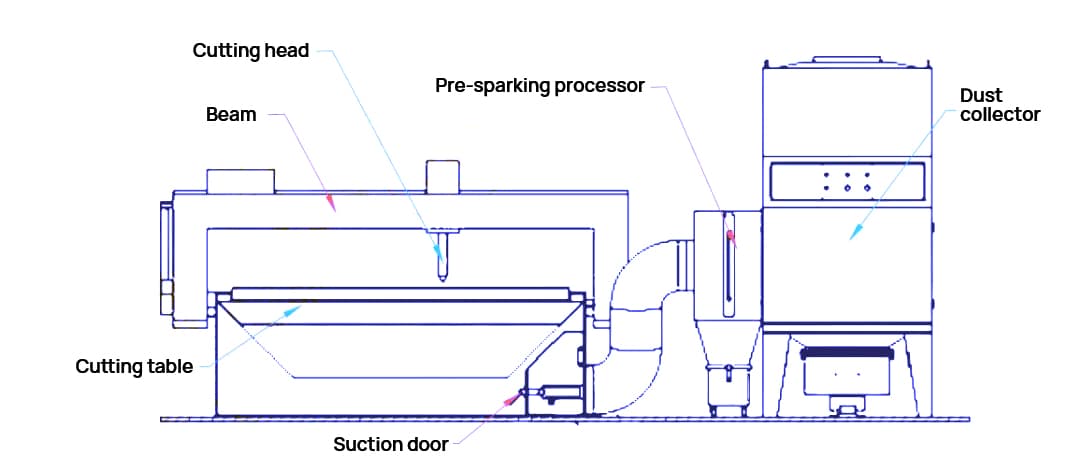
Fig. 2 Structural schematic diagram of single-side downdraft damper type cutting dust removal system
(2) Double side lower exhaust damper type cutting dust removal system.
Figure 3 shows the structure of the cutting and dust removal system with double side lower exhaust damper, which is applicable to the cutting platform with effective cutting width ≥ 4m.
Wide-format laser cutting machines larger than 4m are often equipped with double cutting heads. When the two cutting heads work at the same time, a large amount of smoke and dust will be generated.
Therefore, the double-side lower exhaust damper type cutting and dust removal method can be adopted, that is, both sides of the machine body are equipped with exhaust pipes.
When the two cutting heads move to the area, the exhaust valve on both sides will open at the same time, and the smoke and dust generated by the two cutting heads will be sucked into the pipe to achieve the dust removal effect.
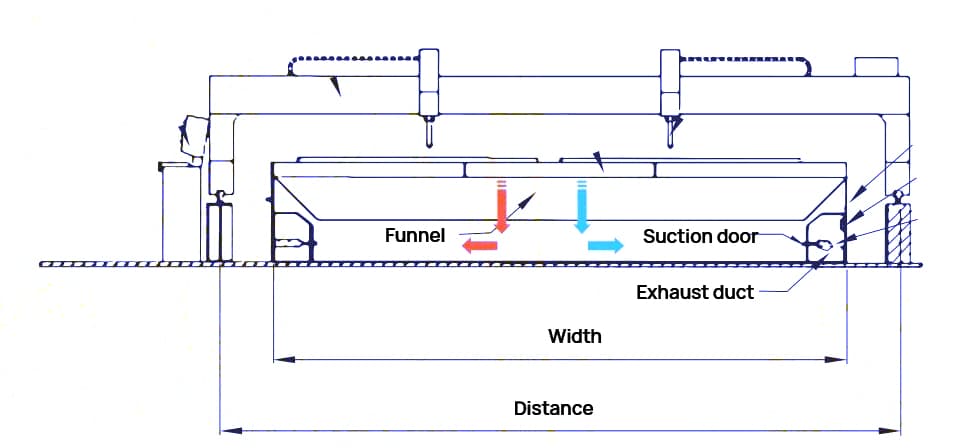
Fig. 3 Structural schematic diagram of double-side downdraft damper type cutting dust removal system
A square suction air duct is installed on one side of the cutting platform.
A sliding suction trolley that can move with the cutting machine is installed above the air duct, and a blower is installed on the other side of the cutting platform.
The hair dryer, cutting head and sliding suction trolley are three points and one line, and the platform grille air duct is formed by using the working table tooth plate on the cutting platform and the steel plate to be cut.
When cutting the steel plate, the blower will blow the cutting smoke and dust generated to the sliding suction trolley through the grille air duct, which will be sucked into the suction duct and then enter the dust collector for purification and discharge.
The air volume required for blowing and suction cutting dust removal has a great relationship with the coverage of cutting platform steel plate on the platform.
The higher the coverage, the better the dust removal effect.
The square suction duct, sealing belt and sliding suction trolley are important components of the blowing and suction dust removal system, and their structural form is shown in Fig. 4.
When working, the sealing belt is tightly attached to the square suction duct under the negative pressure of the pipe system to play a sealing role.
There are four rollers in the sliding suction trolley, where the sealing belt is jacked up by the rollers, so that the smoke and dust enter the square suction duct after passing through the internal structure of the suction trolley, and finally are transported to the dust collector for purification and discharge.

Fig. 4 Square suction duct, sealing belt and sliding suction trolley
The wet treatment method, also called wet cutting, is actually to make a water bed cutting platform (Fig. 5), place the steel plate in the water or water surface, and then complete the cutting operation under the water or close to the water surface.
Use water to capture the smoke and dust generated in the cutting process, so as to achieve the purpose of purifying the environment.
But the new problems brought by this way are water pollution and subsequent wastewater treatment.
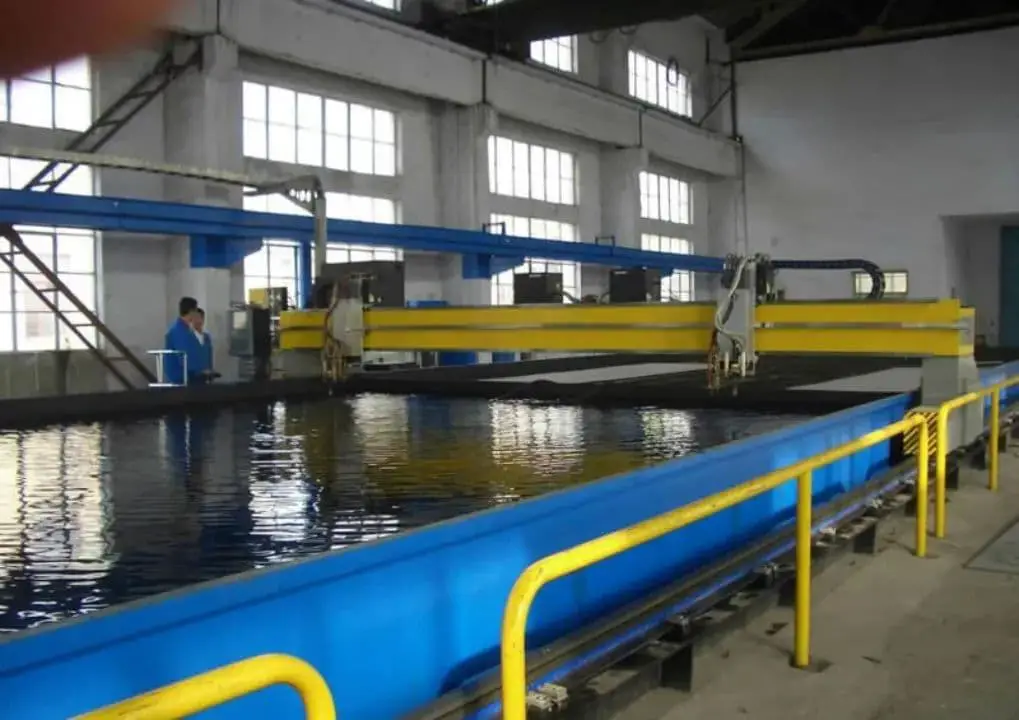
Fig. 5 Water bed cutting platform
In order to improve the production capacity and speed up the process, laser cutting machines with larger and wider machine tool processing ranges and higher power have come into people’s view.
At the same time, the monitoring of industrial environmental protection by relevant national departments has also paid more attention to the emission of smoke and dust in the workshop.
Therefore, the rational allocation of dust removal and purification equipment is also an inevitable trend of the development of the current era.
This article introduces two major types of dust removal treatment methods – dry and wet treatment methods.
Considering the economic cost and practical effect, the dry dust removal treatment method is the most common.

